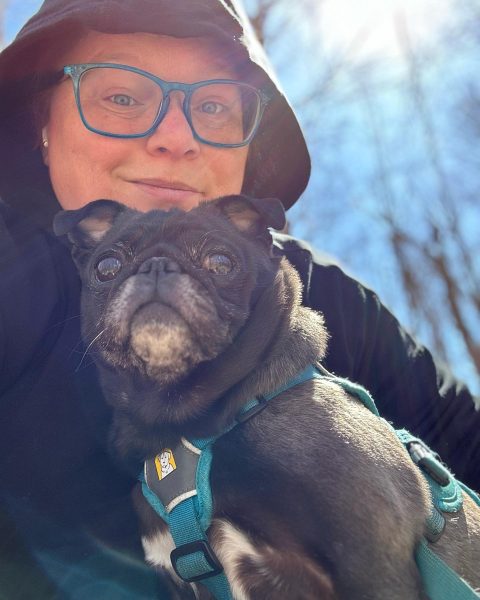Springtime is for the birds
Some consider it a scientific pursuit, some say it’s a competitive sport, and others call it a hobby. However people view it, birding is an environmentally friendly way to collect, share and celebrate some of nature’s most unique creatures. In recent years, birders have witnessed many changes in bird populations due to human alteration and climate change.
There are two main goals in birding: spotting as many species as possible throughout the year or searching for bird species that the spotter hasn’t found previously. Elizabeth Zinn, part-time teacher of ornithology at JSC, says, “It’s [birding is] this wonderful, perfect activity. It gets you outside enjoying nature, but at the same time there’s this little competitive element that makes it really fun.”
Many birders enjoy this activity as a relaxing hobby, but some take it as a challenge and compete with other birders. The competitive side of birding has recently become more accessible to novice birders with the introduction of eBird, a bird tracking app and website. “You put in everything you see,” Zinn says. “All of that information goes into this big database that [can be used] to see what is happening with bird populations around the world.”
This technology has had a large effect on the scientific community by producing a constantly updated, crowdsourced list of bird populations around the world. By tracking bird sighting, scientists have been able to see the effects of climate change worldwide. Avid birders participate year round, but the optimal months for birding in Vermont are April and May.
“Spring migration is really the highlight,” Zinn says. “Some birds have what’s called breeding plumage, so they have more brightly colored feathers in the spring and they lose that in the fall.”
Zinn recalled a trip she took with a few JSC students to Lake Champlain last weekend. “It’s waterfall migration happening right now, so there’s a lot of interesting ducks out there and a lot of interesting hawks,” she said. “We saw four different species of hawk and an eagle. So if you know where to look, anytime of year is good.”
The optimal time of year for birding is slowly changing due to the warming climate. “That is problematic because a lot of birds rely on insects coming out at a certain time,” says Zinn. When the birds migrate too early, they risk starvation and decreased populations when reproductive season occurs.
Another effect of climate change on birds is the altering of population ranges. “For example, the American Goldfinch used to nest from Texas to the Northern United States and that has shifted up. They don’t really nest in Texas anymore, and they nest further up into Canada now,” says Zinn. This could entirely change the species and timing of birds migrating to Vermont in future years.
According to Zinn, the common species found in Vermont are also being altered by habitat destruction due to deforestation. Areas that have been clear cut changed from a forest ecosystem to that of a prairie, which allowed for occupation by birds like the brown-headed cowbird.
Adult male brown-headed cowbirds are easily identifiable by their iridescent black bodies and brown colored heads. They primarily nest in prairie environments, but Zinn says, “We’ve cut down all the trees so they can come into areas like this. They really damage populations of other birds because their young outcompete the other birds in the nest.”
Although Vermont may see a change in bird populations, there are still many species that remain constant each year.
One of the most common birds spotted in the Johnson, Vermont area is the red-orange breasted American robin, one of the most abundant birds in the nation.
sOther common birds in Vermont include the tufted titmouse, a small songbird; the black-capped chickadee, with its distinctive black cap and bib; and the American crow.
Another commonly spotted species in Vermont is the red-bellied woodpecker.
Although their name suggests otherwise, their most noticeable red plumage is found on the back of their head.
In the past, the red-bellied woodpecker would migrate to the south U.S. and into Mexico for winter, but recently, Zinn says they have been able to remain in Vermont year round due to the amount of birdfeeders present.
While watching for these birds, birders generally use binoculars to help spot them and discover their species. Avid birders will use a small handheld telescope, called a spotting scope, for a better image of the bird.
One of Zinn’s favorite birds to spot are the warblers. “There are all kinds of species of warbler and they are beautiful! But most people don’t know they are there, unless they’re a birder,” says Zinn. She estimates there are around 15 to 20 different species of warbler that come through and nest in Vermont.
With a trained eye and ear, warblers can be found right on the JSC campus.
“Hiking the trails behind Johnson last spring, the warblers were crazy,” says Zinn. “There were all kinds of warblers. There’s a lot right here beside campus if you go out and look.” Some of the best places to look for birds are down by the water’s edge at a river or lake. Many birders go to birding events and hikes for the company of the group and the expertise of the guide.
“One of the things that I think is great about birds is that there are just the right amount of them that you can know them without it being overwhelming,” says Zinn, “It’s just the perfect group of animals to have a lot of fun searching for!”





